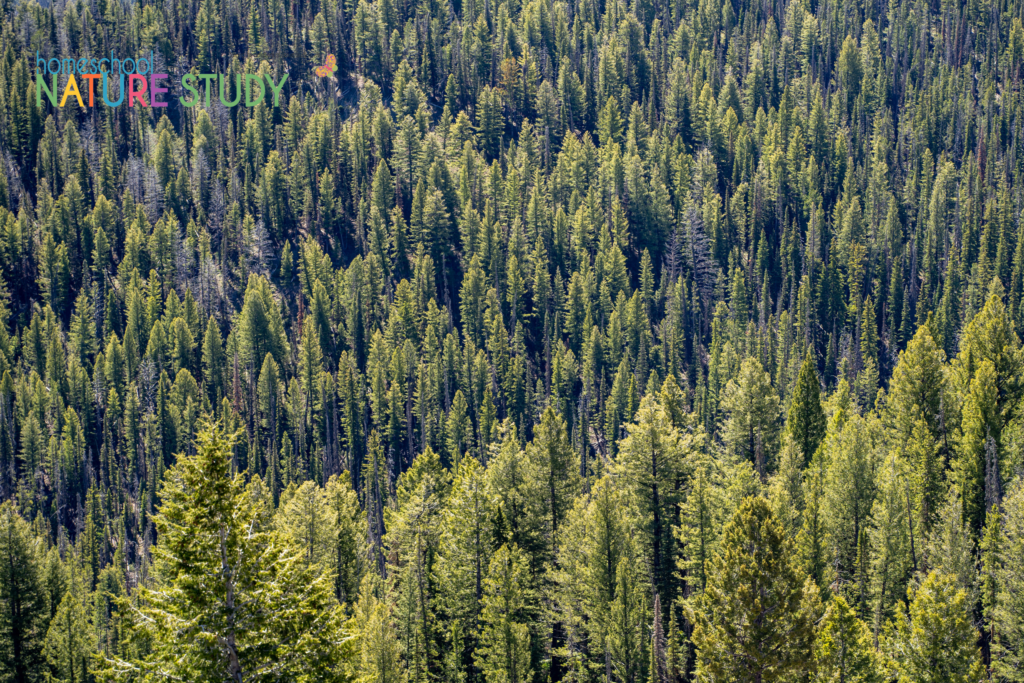“Of all pines, this one gives forth the finest music to the winds.” John Muir

Our local forest is populated with predominately two different pines: the lodge pole and the ponderosa. Of the two, the ponderosa is my favorite! When the forest is cleared, either by man or fire, the ponderosa pines are so beautifully placed just like in a park. They give each other enough room to grow and flourish. Their colorful bark is highlighted especially with snow on the ground. We decided it was about time we took a closer look at this special tree.
Where are Ponderosa Pines?
The native range of ponderosa pine extends from southern Canada into Mexico, and from the Plains States of Nebraska and Oklahoma to the Pacific Coast.
In the winter season, with a proper frosting of snow, the ponderosa pine is like the quintessential pine of your imagination. It grows with a beautifully colored straight trunk with limbs reaching out at just the right intervals. Plus the needles are long and bundled and the cones are just the right size for holding in the palm of your hand. Read more about pine cones from the Homeschool Nature Study Pine Cones.

I remember learning that little trick to identifying the cones….palm size = ponderosa.
So, using our field guide, we set out to learn some new facts about the ponderosa pine. What an incredibly important tree! Not just for lumber but also as a part of the habitat for many birds and animals.

Did you know?
Bats roost in the crevices behind the bark of ponderosa pine trees. Learn more about bats in the Bats Homeschool Nature Study.
Big game like deer and elk use the pines for food and shelter. Read some interesting elk facts from the Elk Nature Study.
Utah is home to the oldest Ponderosa Pine at a young age of 843 years!

Member’s Pine Cone Worksheet
I love the habitat of the ponderosa pine and the creatures that live there. Some of my favorite family times hiking have been under these amazing trees not just here in Oregon but in California, Utah, Colorado, and Nevada.
Homeschool Nature Study Members can find the Pine Cone Observation Worksheet in their dashboard.

“At least one pine tree should be studied in the field. Any species will do …” Handbook of Nature Study, page 674
Join the Homeschool Nature Study Membership
There are so many benefits to joining. You will access our full range of curriculum, our interactive learning calendar as well as a brand new homeschool nature study challenge post each week!
Original post written by Barb 2018, updated by Stef Layton 2024.












